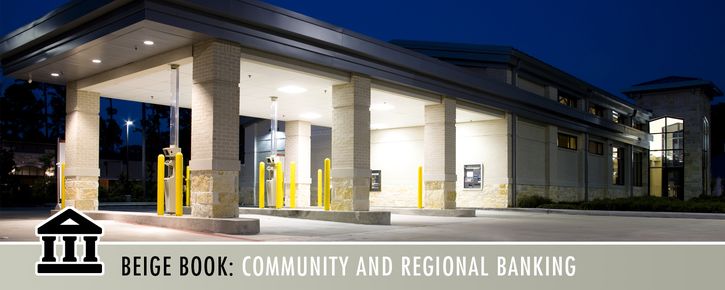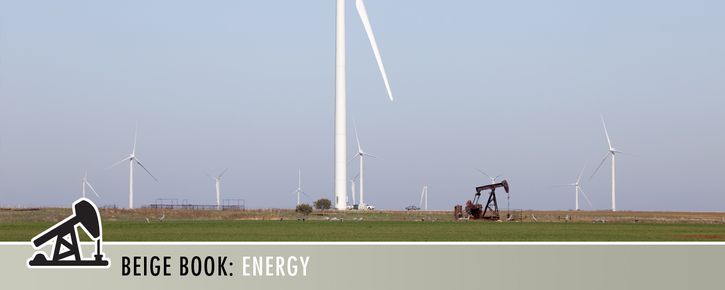Summary of Economic Activity
The Tenth District economy expanded slightly over the past month. Job gains were modest and concentrated in service sectors. Employers reported that both wage and non-wage labor costs rose, but more slowly than in past years. Although worker availability continued to improve, employers indicated the performance of new low-skill hires was below their expectations and past experiences. The number of foreign-born workers available for hire rose in the District, yet only a few contacts indicated that a greater number of immigrants translated to more hiring activity. Consumer spending increased modestly, with long-subdued auto sales picking up as borrowing rates moderated. Many contacts noted an increase in demand for home equity lines of credit as a means to cash-out equity and pay off debt. The supply of housing was reported to have increased, slowing the pace of housing price growth. Business activity expanded slightly according to most contacts, with notable gains in productivity reported across sectors. However, high credit costs and staffing issues suppressed hiring and capital reinvestment plans among small, minority- and women-owned businesses. Energy activity continued to decline due to low price expectations. Agricultural bankers reported mild deterioration in farm borrower liquidity and gradual softening in farm loan repayment rates.

Overall hiring activity rose slightly across the District, as moderate job growth among service companies was offset by mild decreases in employment at manufacturing firms. Business contacts reported wide differences in their satisfaction with recent hires across job and skill types. Most contacts reported lower levels of satisfaction and worker performance among new low-skilled hires as compared to higher-skilled workers. The number of foreign-born workers available for hire rose in the District. However, few contacts indicated that immigrant workers were a notable source of new labor supply, as barriers to hiring were difficult to overcome. Non-wage benefit costs grew at a modest pace. Most employers indicated increases in healthcare benefit costs were smaller than in recent years. However, several contacts noted that recent enhancements to non-wage benefits – such as, subsidized childcare, higher contributions to retirement plans, and expanded coverage for healthcare – were “sticky” labor expenses, not likely to be reduced. As labor market tightness continued to ease, business contacts reported little willingness to provide mid-year wage increases for employees. Still, wages continued to rise at a moderate pace.

Manufacturing businesses reported the price of finished goods grew at a modest pace over the last month. However, contacts reported that price pass-through remains a challenge as the price of raw materials continued to grow at a robust pace. Both manufacturing and services contacts indicated they expect moderate price pressures over the next six months. Several business contacts reported a significant increase in their operating expenses, highlighting notable growth in business insurance costs. Contacts anticipate greater difficulty passing along those operating costs to customers, thus further compressing profit margins.

Consumer spending increased modestly, but reports were mixed across categories of spending. Retail spending softened slightly, but spending on non-discretionary essential items was reportedly strong. Restaurants indicated spending increased notably from previous declines, but hotel bookings and recreation spending was mostly unchanged. Auto dealers reported a moderate increase in sales following a prolonged period of declines over the past year. Businesses expected slight declines in revenue growth over the next six months due to ongoing price sensitivity among consumers.

High credit costs and staffing issues suppressed hiring and capital investment plans among small, minority- and women-owned businesses. Despite some broader easing of labor market tightness, the limited availability of workers led to heightened business uncertainty and reduced operating hours among smaller businesses. One contact reported it was not unusual for them to hear of small businesses hiring five people, having three show up on the first day, and only one remaining by the end of the week. There were also reports of increasing small-business owner burnout from trying to make up for staffing and revenue shortages. While many contacts reported businesses have had success in obtaining grants, the help has often been temporary with those businesses either coming back for more assistance or closing after the funding ran out.

Business activity expanded slightly over the last month, with manufacturing contacts reporting a modest contraction, offset by slight expansion reported among service contacts. Businesses across most sectors reported notable gains in productivity in recent quarters, driven by several factors: lower worker turnover, greater utilization of technology, and enhanced worker training efforts. Most manufacturing contacts indicated a continued, or growing, interest in investing in labor-saving or productivity-enhancing technologies. Specifically, manufacturing firms expressed an elevated interest in automating costly labor-intensive skills like welding and metal fabrication. In services, consumer-oriented businesses expressed limited ability to invest in labor-saving technologies. In contrast, contacts in professional business services sectors highlighted the use of artificial intelligence (AI) as a strategy for improving business productivity. Specifically, contacts in the marketing industry reported notable productivity gains for rudimentary time-intensive tasks and technology contacts report AI is replacing entire teams of software engineers, resulting in lower costs and greater profitability.

In residential real estate, the inventory of single-family homes for sale was significantly higher in most District states. Ongoing construction of multi-family housing also moderately increased the availability of housing. However, contacts indicated development activity for new multi-family housing remains at a multi-year low due to subdued expectations for rent growth that challenge the profitability of new construction. Though growth in housing prices slowed, reports of robust growth in property insurance premiums were widespread. Many contacts noted a modest increase in demand for home equity lines of credit (HELOC) as a means to cash-out equity in order to pay off auto debt, credit card debt, and other non-bank loans.

Loan demand at District banks was unchanged from the previous month. While high interest rates muted demand for commercial deals in recent months, residential mortgage demand increased slightly as prospective borrowers have become more accustomed to the prospect of higher interest rates compared to past years. Demand for mortgages was further buoyed by slight declines in mortgage rates in recent months. Credit standards were unchanged across loan types. More contacts expected credit quality to remain stable over the coming six months, but concerns about the performance of maturing commercial real estate deals remained. Bankers reported moderately stronger deposit levels and noted that deposit rates stabilized.

Tenth District energy activity continued to decline slightly. The number of active rigs in the District fell only modestly, but firms do not expect a rebound in drilling activity as near-term price expectations are lower than the price needed for a substantial drilling increase. Revenues, profits, and capital expenditures continued to fall as drilling for oil remains profitable for the average District firm, but drilling for gas is still unprofitable. Despite the subdued outlook for production, firms continued to increase employment to make up for past shortfalls in headcount and expect the number of jobs and employee hours to increase somewhat in the next six months.

Agricultural economic conditions in the Tenth District continued to moderate through the end of March. Agricultural bankers reported a mild deterioration in farm borrower liquidity and a gradual softening in farm loan repayment rates. Crop prices were subdued, and some contacts reported slightly higher instances of carryover debt than a year ago. Cattle prices remained strong, however, and provided ongoing support to the sector. Elevated production expenses and high financing costs remained ongoing concerns for all types of operations. Drought was also cited as an issue in some areas of the region. Farm real estate values increased at a slower pace compared to recent months, but valuations were strong despite the moderation in the farm economy.
